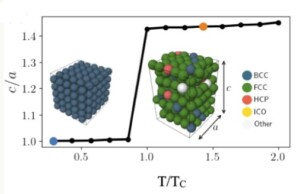Steels are among the technologically and economically most relevant materials. Key innovations in important sectors of human society such as mobility, energy and safety, are currently based on alloying of Fe with other transition-metal elements such as Mn, Cr, or Co.
Due to strong impacts and conceptual challenges related to magnetism, however, the fundamental understanding and the ability to computationally design these steels in high-throughput approaches lags behind other classes of alloys. In this article, we will provide a substantial review of the role of magnetism, magnetic excitations and transformations for alloy thermodynamics, point defects, interfaces and kinetics. This will be achieved by combining insights from different methods: Ab initio simulations have the advantage that the magnetic ground state is intrinsic part of the electronic minimization. Due to the coarsening of the many-electron structures and therewith magnetic interactions, tight-binding methods can handle larger system sizes. Effective interaction models provide the freedom to exploit more sophisticated magnetic interactions. The performance of these methods in terms of magnetic properties of Fe alloys will be evaluated by providing state-of-the-art results for their sensitivity to magnetism. Furthermore, dedicated experiments will be discussed to complete the understanding of magnetic effects in Fe alloys and to validate the modeling strategy.




